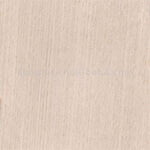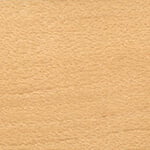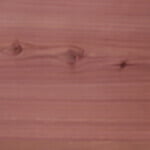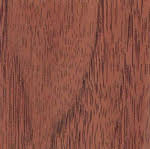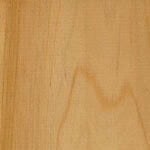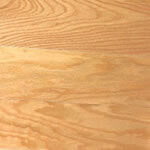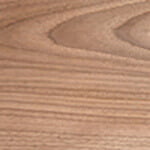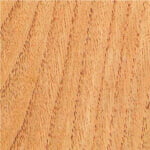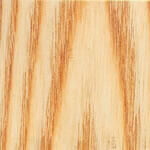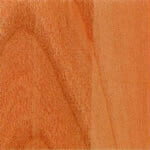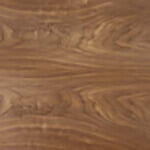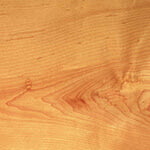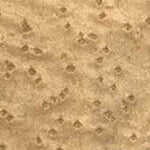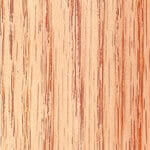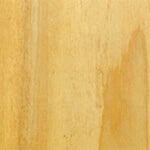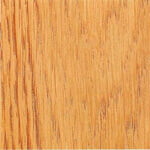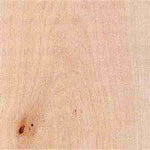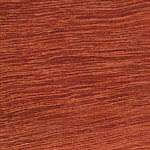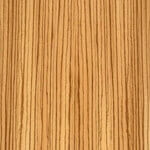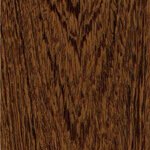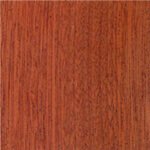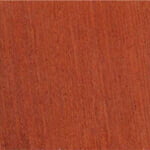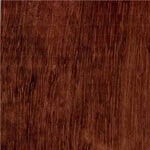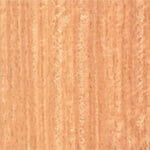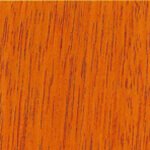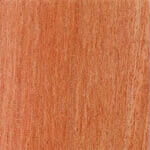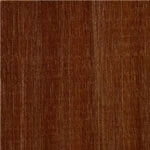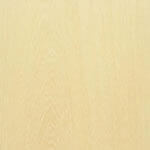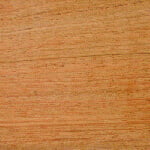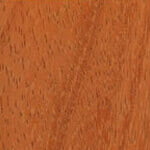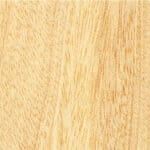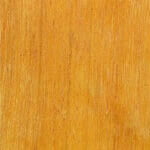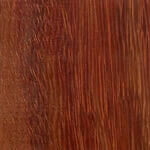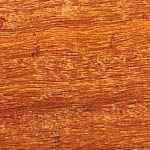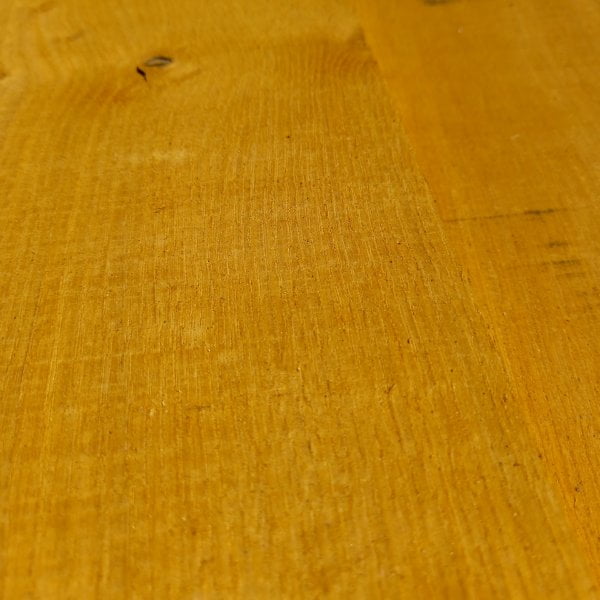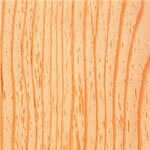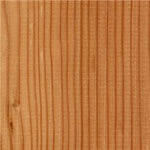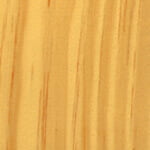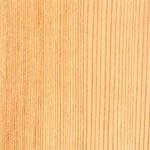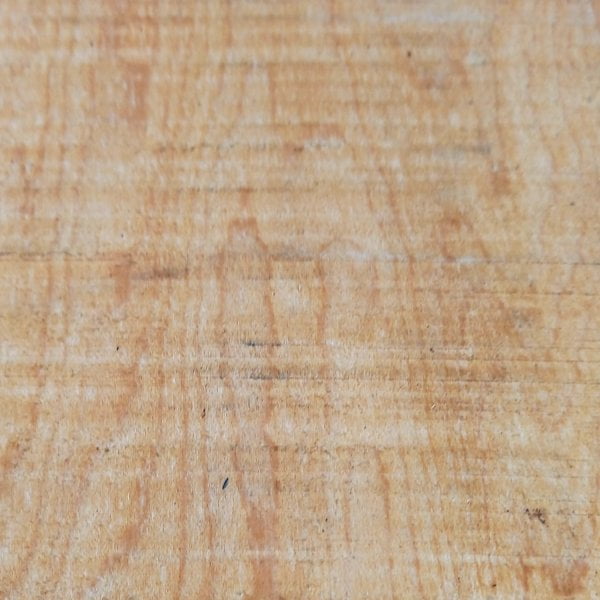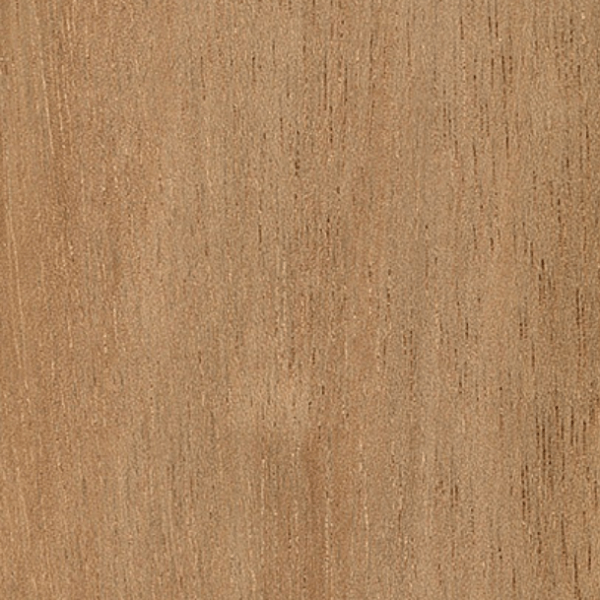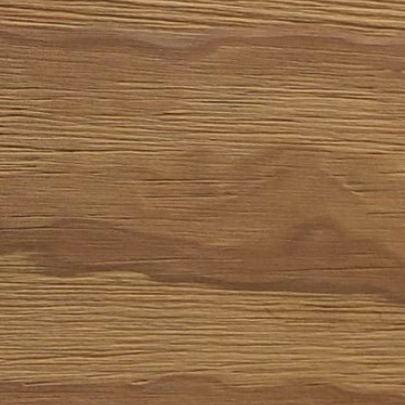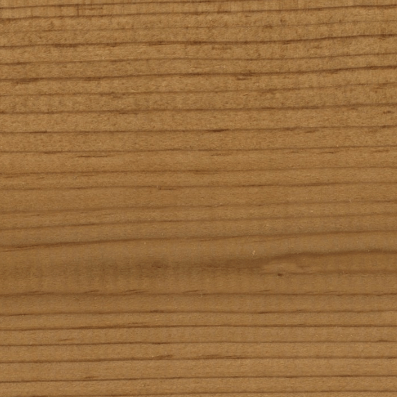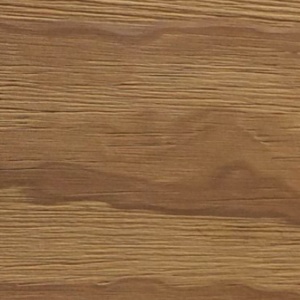Filters
-

Padauk
The heartwood is a vivid blood red, toning down to dark purple-brown with red streaks upon exposure. The grain is straight to interlocked with a moderately coarse texture. Weight varies from 640-800 kg/m³ (40-50 lb/ft³), average 720 kg/m³ (45 lb/ft³); specific gravity .72.
-

Purpleheart
Purpleheart's general qualities are outlined below. From our headquarters in Leicestershire, we can supply high-quality cuts of purpleheart wood across the UK. For all enquiries and information, please contact our customer support team.
- Colour: As the name suggests, Purpleheart’s heartwood is a deep purple-violet colour when freshly cut, maturing to a dark brown. The original colour is restored when re-cut.
- Grain: Straight grained, but often irregular, wavy, and sometimes interlocked, producing a pleasing striped figure on quartered surfaces.
- Texture: moderate to fine.
- Weight: Weight varies from 800-1,000 kg/m³ (50-63 lb/ft³) averaging 860 kg/m³ (54 lb/ft³).
- Specific gravity: 86.
-

Sapele
The heartwood has a medium to dark reddish-brown colour, characterised by a well-defined ribbon striped figure on quartered surfaces. Sometimes, when wavy grain is present, a very attractive fiddleback figure, roe figure or occasionally, beautiful mottled figure is obtained. The grain is interlocked or wavy and the texture fairly fine. Has a cedar-like scent when freshly cut. The timber is liable to ring or cup shakes. Weight varies between 560-690 kg/m³ (35-43 lb/ft³) averages about 620 kg/m³ (39 lb/ft³); specific gravity .62.
-

Siberian Larch
The resinous heartwood is pale red-brown to brick red in colour, with clearly marked annual rings. The wood is straight grained, contains knots, and has a fine uniform texture. Weight about 590 kg/m³ (37 lb/ft³); specific gravity .59.
-

Southern Yellow Pine
The sapwood is narrow in the better grades, sometimes up to 50mm wide, lighter in colour than the heartwood which is yellowish-brown to reddish-brown. Both species are typical of the hard-pine class, being resinous, with the growth-rings usually well-marked by the contrast between the light-coloured early-wood, and the dense, darker-coloured late-wood, which produces a rather coarse texture in the wood, especially in fairly rapidly grown material with its wide growth-rings. The timbers weigh about 670 kg/m³ on average when dried. The lower density material of P. palustris and P. elliottii together with other species termed southern yellow pine, is lighter in weight, coarser in texture, inferior in strength, and usually has a wider sapwood, sometimes as wide as 150mm.
-

Steamed Beech
European Beech's heartwood is very pale pink-brown. It is common practice on the continent to steam the timber which turns it to a reddish-brown tone. Some logs have a dark red kern or darker veining. Beech has a straight grain and fine, even texture. Average weight 720 kg/m³ (45 lb/ft³); specific gravity .72.
-

Sweet Chestnut
Sweet Chestnut's sapwood is narrow, distinct from the heartwood which is yellowish-brown in colour, closely resembling oak in appearance, but lacking the silver-grain figure characteristic of that timber, resulting from the finer rays. European Sweet Chestnut is a stable, straight grained and hard-wearing timber species (when the sapwood is excluded).The grain may be straight, but is more commonly spiral, particularly in timber from old trees, while logs are liable to cup and ring-shake. It weighs about 560 kg/m³ when dried. On account of its somewhat acidic character chestnut tends to accelerate the corrosion of metals, particularly when moist. It also contains tannin, as a result of which blue-black discolourations are prone to appear on the wood when it comes into contact with iron or iron compounds.
-

Swiss Pear
Pear's heartwood is pinkish-brown in colour with very fine rays and pores, straight grained and a very fine and even texture. Weight about 700 kg/m³ (44 lb/ft³); specific gravity .70.
-

Thermo Ayous
Thermo-Ayous is a heat-treated hardwood. Ayous is a light coloured African hardwood. It is created using a chemical-free, heat-treating process. The appearance and colour of the wood largely depend on the amount of time the wood spends in the kiln. Generally the longer the heat exposure, the darker the colour of the wood. The timber is clear and virtually knot free.
-

Thermo Radiata Pine
Thermo Radiata Pine ® is a heat-treated timber, usually made from Radiata Pine grown in New Zealand. It is created using a chemical-free, heat-treating process. The appearance and colour of the wood largely depend on the amount of time the wood spends in the kiln. Generally the longer the heat exposure, the darker the colour of the wood. The timber is generally free of knots and has an attractive grain pattern
-

Thermo Redwood
Thermowood® is a heat-treated timber, usually made from Scandinavian softwoods. It is created using a chemical-free, heat-treating process. Pine and spruce is subjected to heat of approximately 180 - 230 degrees celsius within a chamber kiln for up to 96 hours. Steam is used as a protective gas in order to protect the wood and prevent splitting. This process changes the internal structure of the wood, drying it out to make it more stable and durable. Thermowood has a density of 350 - 480 kg/m3. The appearance and colour of the wood largely depend on the amount of time the wood spends in the kiln. Generally the longer the heat exposure, the darker the colour of the wood.
-

Utile
The heartwood matures from a pink-brown when fresh cut to deep red-brown. The grain is interlocked to rather irregular, producing a wide irregular striped figure on quartered surfaces. Weight varies from 550-750 kg/m³ (34-47 lb/ft³), but averages 660 kg/m³ (41 lb/ft³); specific gravity .66. Texture, uniformly moderate.
-

Wenge
Wenge is a tropical hardwood, typically sourced from tropical climates such as Zaire and Cameroon Republic. The clearly defined heartwood is dark brown, with very close, fine, almost black veins. The wood is laced with closely spaced whitish bands of parenchyma, giving wenge an attractive appearance. It is fairly straight grained and has a coarse texture. With a weight of 880 kg/m³ (55 lb/ft³) and a specific gravity of 0.88, wenge is a relatively hard and heavy wood.
-

Western Red Alder
Western Red Alder's heartwood is pale yellow to reddish-brown in colour. Fairly straight grained and of uniform texture; it shows a pleasing but subdued figure. Weight about 530 kg/m³ (33 lb/ft³); specific gravity .53.
-

Western Red Cedar
Western Red Cedar is straight grained, rather coarse textured, with a prominent growth ring figure and non-resinous. The timber's heartwood shows considerable colour variation when fresh, from a dark chocolate-brown to a salmon pink colour, perhaps variegated, maturing down to a reddish-brown and, in time, to silver-grey – this weathered appearance sometimes sought-after by architects. Weight is 370 kg/m³ (23 lb/ft³); specific gravity .37.
-

White Beech
European Beech's heartwood is very pale pink-brown. It is common practice on the continent to steam the timber which turns it to a reddish-brown tone. Some logs have a dark red kern or darker veining. Beech has a straight grain and fine, even texture with a knot-free appearance. Derived from European trees, White Beech has a good all-round strength equivalent to oak but has superior bending properties and stiffness.Average weight 720 kg/m³ (45 lb/ft³); specific gravity .72.
